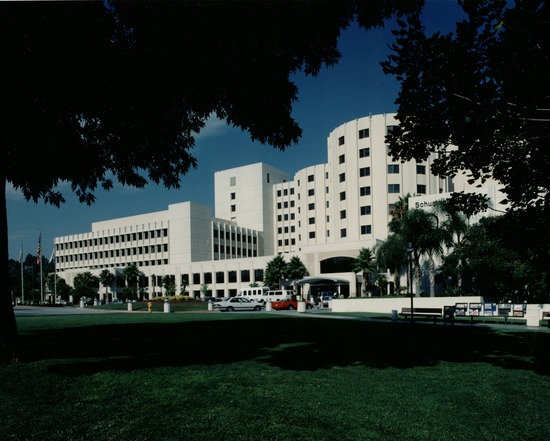A Look at Adventist Colleges and Universities
On the outside, Seventh-day Adventist universities may not look much different than other college campuses. But the real differences are beneath the surface.
Adventist Universities are all about helping each student have a fulfilling educational journey on a Christ-centered campus. Lifelong friendships are forged. Pivotal career decisions are made. And the supportive spiritual environment can help students grow in immeasurable ways.
Let’s take a closer look at what makes Adventist universities so loved by both their alumni and their surrounding communities.
- The story of the Adventist college
- What is the mission of Adventist universities?
- Why would someone choose an Adventist university?
- Adventist universities in North America
We’ll start with some history.
The story of the Adventist college

Courtesy of the Ellen G. White Estate, Inc.
The first Adventist college was born in 1874 with Michigan’s Battle Creek College (present-day Andrews University). The Adventist Church was exceptionally committed to quality education, especially coming out of a time when the United States was more industrially focused than scholastically focused.
These campuses also provided a place to formally train pastors and teachers, as well as other professions that were in high demand for mission service.
A few years later, Pacific Union College’s forefather, Healdsburg College, opened in 1882.
This was closely followed by the Battle Creek College Training School for Nurses within the Battle Creek Sanitarium, which spurred the development of Adventist nursing schools, hospitals, and eventually, medical schools.
In 1895, the Sanitarium began the first Adventist medical school, American Medical Missionary College.
In 1893, Claremont Union College in South Africa became the first Adventist college outside the United States. Soon after, Adventist universities opened in Australia, South America, and Europe, respectively.
Today, Adventist universities have blossomed everywhere. There are currently 117 Adventist colleges dotting the globe,1 forming the second largest Christian school network in the world.2
What is the mission of Adventist universities?
Originally, Adventist education began with the purpose of training denominational workers and providing children with a higher quality education than was typically available at the time.3
Today, the goal isn’t much different: Adventist universities equip students with the necessary skills for today’s workforce, while also teaching them how their faith can be woven into everything they aspire to do.
Adventists believe that education is key when it comes to being good stewards of our minds and our talents. This echoes the Bible’s emphasis that pursuing knowledge and getting to know God goes hand in hand (Proverbs 9:10).
With this in mind, Adventist colleges operated with an emphasis on each student being a unique individual with God-given gifts.4 Students were to be encouraged to use the abilities God gave them, so they can become cheerful contributors to their communities.
That’s why Adventist universities provide a well-rounded education to promote spiritual, mental, physical, and social health, intellectual growth, and service.5
Along with serving, Adventist universities promote excellence, intelligence, engagement, and community. All these support the umbrella of faith, to best equip students to relay the gospel to the world.6
And if anyone is considering a career in health care, an Adventist university can be a terrific fit due to the special emphasis Adventists place on the need for caring, quality medical care.
Let’s take a look at some of the specific reasons people choose Adventist colleges.
Why would someone choose an Adventist university?

Photo by Creative Art on Pikwizard
A number of things set Adventist universities and colleges apart.
- Variety of quality programs: Adventist universities offer competitive programs in a wide range of majors. For example, Southern Adventist University is known for its nursing program, which is in the top 20% in the United States.7 La Sierra University’s Enactus business team has won two Enactus world cups.8 And Loma Linda University is considered one of the best medical schools in the U.S.9
- Competitive graduation rates: Most Adventist universities have a graduation rate at or above the national average of 55%. Andrews University, for example, hands diplomas to 61% of its undergraduates.10 Loma Linda University graduates 87% of its students.11 Most of the other Adventist campuses range from 50%-59%.
- Diversity: Attracting students from all over the world causes Adventist campuses to be diverse places, which can enrich the educational experience. As of 2018, Andrews University ranked #1 in campus ethnic diversity. That year, 20% of their students came from other countries.12 In 2021, La Sierra University took the same prize.13 Adventists are not the only students who attend, either. So many students from other faiths and philosophies want to attend that in some cases, they almost double the enrollment.14

Photo by Ludo Poiré on Unsplash
- Close-knit campuses: Adventist colleges tend to have a smaller student body. Their U.S. schools range from 754 students (Southwestern Adventist University) to 4,514 (Loma Linda University). Compare this to the numbers of all other American universities, which are as high as 63,124.15 Students at large universities can feel like just a number, while smaller universities help students feel like a meaningful part of the community.
- Smaller student-faculty ratio: Smaller classes also mean more one-on-one attention from the professors. The average student faculty ratio in North American Adventist colleges is 11:1, with the national average at 14:1.16 In these close-knit environments, students can build strong, lasting relationships.
- Biblical emphasis: Throughout all parts of the college experience, students learn how the Bible can be part of everything. This is even woven into the class structure. For example, Southern Adventist University asks professors to create a biblical course design model for each class they teach. This incorporates faith with the practical skills students learn.17 It’s also common for professors to offer prayer before class and sometimes share a Bible text or relevant devotional thought.
- Athletics: Some schools emphasize athletics more than others, but every school has some form of sports or activity options. Southern Adventist University students, for example, play only intramural sports. All competition is within Southern’s teams. Washington Adventist University, however, is more heavily involved in athletics. Their campus’ team, The Shock, is part of NAIA and USCAA and competes in basketball, cross country, volleyball, and soccer.18
How can I attend an Adventist university?
Attending an Adventist university is relatively easy. You don’t have to worry about a massive number of students also applying for the same program.
A quick search can tell you which Adventist university is closest to you, or you can look up several of them to see which ones have the programs you’re interested in. You can schedule a visit first, or you can dive right into the application process.
Yes, Adventist schools are private institutions and tend to have a heftier price tag. The average 2022 tuition and fees of Adventist universities in the United States is $25,707, with Kettering College the lowest at $14,23219 and Loma Linda the highest at $36,000.20 However, most schools offer scholarships to help ease the financial burden. Other financial aid is also available. Be sure to check out what each Adventist university offers.
Adventist universities in North America
In the North American Division, 13 universities and colleges serve their students.
- AdventHealth University: Situated in Orlando, Florida, AdventHealth trains students to become medical professionals in a wide range of areas.
- Andrews University: One of the most culturally diverse universities in the United States, Andrews attracts students to its campus in Berrien Springs, Michigan. It is particularly known for its theological seminary.
- Burman University: Canada’s “light on the hill” serves students from Lacombe, Alberta. It is best known for its program in education.
- Kettering College: Located in Kettering, Ohio, this is a place for students seeking medical degrees.
- La Sierra University: Located only 60 miles from Los Angeles, La Sierra has a prominent degree in criminal justice.
- Loma Linda University: Loma Linda is a large California university best known for its robust graduate medical programs.

Courtesy of the Ellen G. White Estate, Inc.
- Oakwood University: Historically founded to educate former slaves, Alabama’s Oakwood University is best known for its degrees in liberal arts and humanities.
- Pacific Union College: This college in Angwin, California, serves specifically undergraduates and is the largest source for Loma Linda University’s School of Medicine.
- Southern Adventist University: Based in Collegedale, Tennessee, Southern has an exceptional nursing program and other sciences.
- Southwestern Adventist University: Southwestern offers a unique degree in Fire Science. The university is located in Keene, Texas.
- Union College: Located in the heart of the great plains, this college is noted for its rescue program.
- Walla Walla University: Positioned near Walla Walla, Washington, this university boasts well-known engineering and nursing programs.
- Washington Adventist University: Located a stone’s throw from Washington, D.C., Washington has a strong nursing program and puts a high emphasis on athletics.
The church also operates a number of other universities around the world:
- Africa: 25
- Angola
- Botswana
- Cameroon
- Democratic Republic of Congo
- Ethiopia
- Ghana
- Kenya
- Liberia
- Madagascar
- Malawi
- Nigeria
- Rwanda
- South Africa
- Tanzania
- Uganda
- Zambia
- Zimbabwe
- Asia: 27
- Bangladesh
- China
- India
- Indonesia
- Japan
- Lebanon
- Malaysia
- Myanmar
- Pakistan
- South Korea
- Sri Lanka
- Taiwan
- Thailand
- Australia: 2
- Europe: 16
- Croatia
- Denmark
- Finland
- France
- Germany
- Hungary
- Italy
- Norway
- Poland
- Romania
- Russia
- Sweden
- Ukraine
- United Kingdom
- North and Central America: 29
- Belize
- Canada
- Costa Rica
- Cuba
- Dominican Republic
- Haiti
- Jamaica
- Mexico
- Puerto Rico
- Trinidad and Tobago
- United States of America
- Venezuela
- Pacific Ocean Islands: 15
- Fiji
- Papua New Guinea
- Philippines
- South America: 18
- Argentina
- Bolivia
- Brazil
- Chile
- Colombia
- Ecuador
- Peru
- Uruguay
Some of the most noteworthy universities around the world include:
- Adventist University of Africa: from Kenya, this institution was built to educate post-graduates in Africa. It offers theological, business, leadership, public health, and computer science degrees.
- Adventist University of France: Also called Campus Adventiste du Salève, this university is the only French-speaking Adventist institution in Europe.
- Adventist University of the Philippines: Based in Puting Kahoy, Silang, Cavite, Philippines, this school offers degrees ranging from the arts to medicine.
- Avondale University: Australia’s university in New South Wales offers a variety of programs and has a well-known nursing program.
- Newbold College: Situated in Binfield, Great Britain, students can earn a variety of religion, liberal arts, and business degrees. The school is part of Adventist Colleges Abroad.
- University of Montemorelos: One of five Adventist universities globally that grants degrees in medicine, this college in Nuevo León, Mexico, offers a large selection of programs.
Adventist universities are not only a place to earn a degree. They prepare the student for being a good citizen in their community and serving others. As Colossians 3:23-24 says, all of our work should be done well, as if for God. And this underlying principle fuels the pursuits of each Adventist higher learning institution.
- Adventist Universities.com, Adventist Universities, Accessed July 14, 2022, https://adventistuniversities.com/. [↵]
- “About Seventh-day Adventist Education,” Adventist Universities.com, Adventist Universities, Accesses July 14, 2022, https://adventistuniversities.com/adventist-education/. [↵]
- “The Birth of Adventist Education,” Lineage Journey.com, Present Lineage Journey, Accessed July 29, 2022, https://lineagejourney.com/read/the-birth-of-adventist-education/. [↵]
- Ibid. [↵]
- Ibid. [↵]
- Taylor, John Wesley V, “What is the Special Character of an Adventist College or University?”, Adventist.org, The Journal of Adventist Education, Accessed July 13, 2022, https://jae.adventist.org/2017.2.5. [↵]
- “Nursing Ranking 2022: Southern Adventist University,” Best Nursing Colleges.com, Best Nursing Colleges, Accessed July 14, 2022, https://best-nursing-colleges.com/southern-adventist-university. [↵]
- https://lasierra.edu/business/impact/ [↵]
- “Loma Linda University School of Medicine Ranking: How to Get Into?” MACThub.com, MCAT Hub, Accessed July 14, 2022, https://mcathub.com/loma-linda-university-school-of-medicine-ranking/. [↵]
- “Andrews University,” College Evaluator.com, College Evaluator, Accessed July 28, 2022, https://www.collegeevaluator.com/institute/andrews-university/. [↵]
- “Loma Linda University Graduation Rates and Retention Rates,” College Factual.com, College Factual, Accessed July 28, 2022. [↵]
- “Andrews University Ranked #1 for Ethnic Diversity,” Andrews.edu, Andrews Agenda, Accessed July 29, 2022, https://www.andrews.edu/agenda/47237/. [↵]
- Tucker, Darla Martin. “Wall Street Journal Again Ranks La Sierra No. 1 in Nation For Diversity,” La Sierra.edu, La Sierra University, Accessed July 29, 2022, https://lasierra.edu/article/wall-street-journal-again-ranks-la-sierra-no-1-in-nation-for-diversity/. [↵]
- Wright, Jard, “Recruiting Non-Adventist Students Already the Norm in Adventist Higher Education,” Spectrum Magazine.org, Spectrum Magazine, Accessed July 13, 2022, https://spectrummagazine.org/article/2017/04/26/recruiting-non-adventist-students-already-norm-adventist-higher-education. [↵]
- Wood, Sarah, “10 Colleges with the Most Undergraduate Students,” US News.com, USNews, Accessed July 29, 2022, https://www.usnews.com/education/best-colleges/the-short-list-college/articles/colleges-with-the-most-undergraduates. [↵]
- “US Colleges Student to Faculty Ratio Statistics,” Univstats.com, Univstats, Accessed July 29, 2022, https://www.univstats.com/corestats/student-faculty-ratio/. [↵]
- “Biblical Course Design Model,” Southern.edu, Southern Adventist University, Accessed July 29, 2022,https://www.southern.edu/administration/cte/BiblicalFoundations/BiblicalCourseDesignModel.html. [↵]
- “Washington Adventist University Athletics,” Adventist Colleges.com, Adventist Colleges and Universities, Accessed July 28, 2022, https://adventistcolleges.org/athletics/washington-adventist-university-athletics/. [↵]
- “Kettering College,” College Tuition Compare.com, College Tuition Compare, Accessed July 28, 2022, https://www.collegetuitioncompare.com/edu/203544/kettering-college. [↵]
- “Loma Linda University,” College Tuition Compare.com, College Tuition Compare, Accessed July 28, 2022, https://www.collegetuitioncompare.com/edu/117636/loma-linda-university. [↵]
Related Articles
More Answers
Joseph Bates
Joseph Bates was a sailor-turned-preacher who joined the Millerite Movement and waited for Jesus to come in 1844. Despite being disappointed when this didn’t occur, Bates held onto his faith and played an enthusiastic and integral part in starting the Seventh-day Adventist Church.
Everything You Need to Know About an Adventist Church Potluck
Every so often, usually on a schedule ranging from once a week to once a month to once a quarter, an Adventist church will have “fellowship dinners,” often casually referred to as potlucks.
The Seventh-day Adventist Hymnal
The Seventh-day Adventist Hymnal is a songbook used worldwide by many Adventist congregations during their worship services. Since its publication in 1985, it has helped foster praise to God while reminding church members of our mission and drawing them closer to Jesus.
Everything You Need to Know about Sabbath School
Sabbath School is the Bible study component of the church program at most Seventh-day Adventist Churches. It’s a time of Bible study on a specific topic or lesson. Instead of listening to a preacher, people interact with one another, making it a great opportunity for building friendships.
What Are Seventh-Day Adventist Sermons Like?
In nearly every Seventh-day Adventist Church, the sermon is the focal point of the main service—similar to many Protestant Christian denominations. It is a time of biblical instruction by the pastor, who shares what they’ve been studying in the Bible and preparing over the previous week.
What is the Great Disappointment and What Can We Learn From It?
On October 22, 1844, thousands of Christians in the Northeastern United States gathered outside to witness what they believed would be the second coming of Jesus.
Ellen White and the Sabbath
The Sabbath is an important topic in the Seventh-day Adventist Church. It shouldn’t surprise you, then, that Ellen G. White, a co-founder of the church, studied the Bible’s teachings on the Sabbath and wrote large amounts about it.
Ellen White and the Great Controversy
The Great Controversy is one of Ellen G. White’s most valued books by Seventh-day Adventists. It connects Bible prophecy with post-biblical history and discusses the factors that will characterize last-day events.
Ellen G. White Life Sketch
Who is Ellen G. White and Why is She Important to Adventists?Ellen G. White was one of the key co-founders of the Seventh-day Adventist Church. And though she lived most of her life in the Nineteenth century, she’s still making a revolutionary impact on millions of...
Who Were the Judges of Israel in the Old Testament?
Times of crisis call for men and women of action. The Israelites, newly settled in the Promised Land, found themselves in those times. As enemy nations attacked and oppressed the tribes, they cried out to God for help. He, in turn, sent them men and women of action—known as judges.
Ellen White’s Visions and Prophecies
The New Testament upholds prophecy as a spiritual gift that will continue to the end of time (Ephesians 4:11–14). Seventh-day Adventists believe that Ellen G. White (1827–1915), a humble woman of God and an earnest student of the Bible, demonstrated this gift of the Holy Spirit through visions and prophecies that she received.
The Armor of God as Described in Ephesians
In Ephesians 6, the Apostle Paul was helping people understand what it means to defend themselves within a spiritual war (Ephesians 6:10-18).
Water’s Importance—Physical Benefits and Spiritual Applications
We all know that water is a substance we can’t live without. It quenches our thirst and keeps us hydrated on the inside. And it’s necessary for hygiene and cleansing on the outside too.
Why is the Sabbath Observed from Sunset to Sunset?
If you know of any Adventists, you may have noticed that they stop their work or business activities before sundown on Friday. What’s the reason behind this?
What Do Adventists Say About Exercise?
Throughout their history, Seventh-day Adventists have upheld the importance of healthy living. This focus on whole-person wellness logically includes exercise, so many Adventists strive to be intentional about staying active.
What is the New Testament? [About Each Book and Key Lessons]
The New Testament is the second section of the Bible, describing Jesus and how He came to this world to reveal the love of God. It tells about His ministry, His death and resurrection, and the church that resulted.
The Millerite Movement
The Millerite Movement was a religious revival that followed the Second Great Awakening in North America. It started with William Miller, an earnest student of the Bible. Due to a misinterpretation of a prophecy in the book of Daniel, he and his followers concluded that Jesus Christ was coming back sometime around 1843 or 1844.
How Did Ellen G. White Help Found the Adventist Church?
Ellen G. White, a humble woman from Gorham, Maine, was a co-founder of the Seventh-day Adventist Church and a key leader in it from its very beginning. Following the Holy Spirit’s guidance at a young age, she dedicated herself to studying Scripture and became involved in the Advent Movement.
History of the Adventist Church
The Seventh-day Adventist Church began as a grassroots movement in the 19th century, following the Second Great Awakening. As people began to study Scripture for themselves, the movement spread quickly from this spark of revival.
Healing in the Bible
Have you ever felt like healing seemed so far away? Like it wouldn’t be possible for you? What you most want is a glimmer of hope or a bit of encouragement.
What the Bible says about Self-Control (and some practical tips)
Self-control is defined as the ability to control one’s thoughts, impulses, actions, and desires. And human nature being what it is, this can be a daily struggle.
All about the prophets in the Bible
Bible prophets and the prophetic books make up a huge part of the Bible. It can make us wonder who these people were, and why God chose them to be prophets.
What the Bible Says About Tattoos (Are They a Sin?)
Only one Bible verse speaks directly to permanent, symbolic markings on the skin. It’s Leviticus 19:28, and it’s one item in a list of ways God told Israel to distance themselves from the pagan practices of the people they lived among.
Why Did Jesus Have Disciples and Who Were They?
During Jesus’ ministry on earth, He selected certain individuals to help with and continue His work. They would be referred to during that time as His “disciples.”
Who Are Adventists
The Seventh-day Adventist Church—“Adventists” for short—is a Christian denomination of ordinary people who seek to follow Jesus and live out His mission in this world. Established in 1863, we hold to the Protestant principle of sola scriptura, which means the Bible guides everything we do.
Life Lessons from Joseph in the Bible
Joseph is one of the more well-known people from the Bible’s Old Testament. He showed remarkable strength, faith, and patience—even while facing great difficulty and injustice. All because he let God lead.
Understanding Prophecy in the Bible
Seventh-day Adventists have emphasized Bible prophecy from the beginning. We have our roots in the study of God’s Word, especially the prophecies that have to do with the future.
How Do You Tell a False Prophet From a True Prophet?
Have you ever wondered how people in Bible times were able to tell if their prophets were actually from God?
All About the Old Testament
The Old Testament is the first section of the Bible and makes up about three-quarters of its material. It lays out the story of Creation, humanity’s fall into sin, and God’s promise to rescue us from sin.


















![What is the New Testament? [About Each Book and Key Lessons]](https://dev.askanadventistfriend.com/wp-content/uploads/2022/02/new-testament-400x250.jpg)











